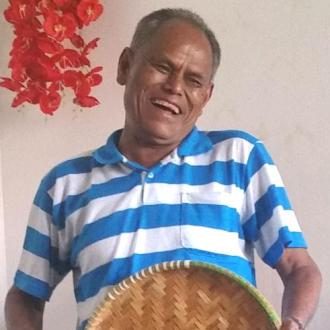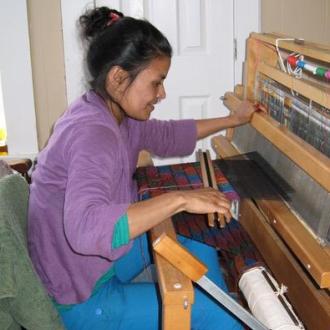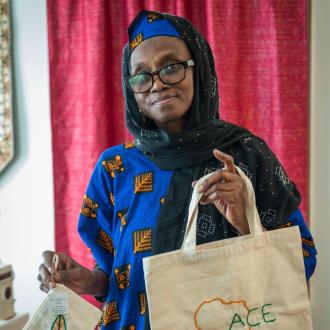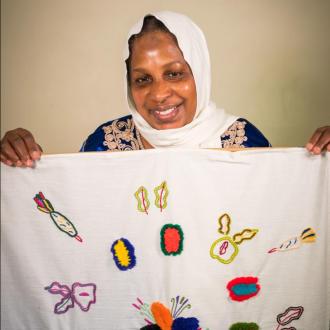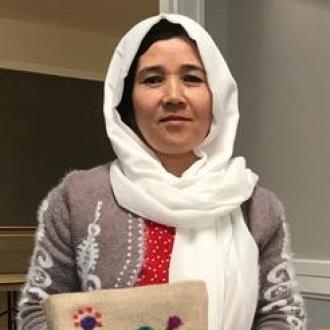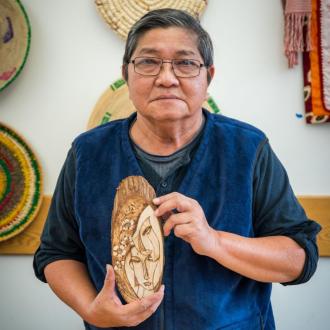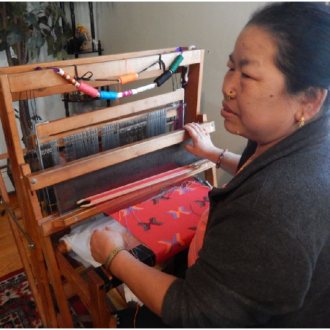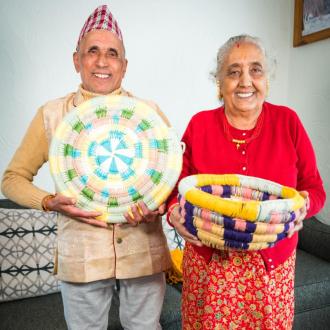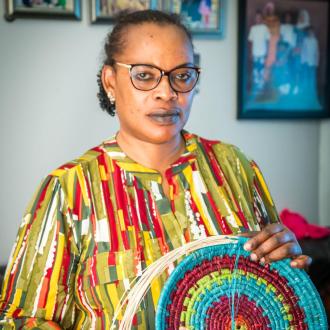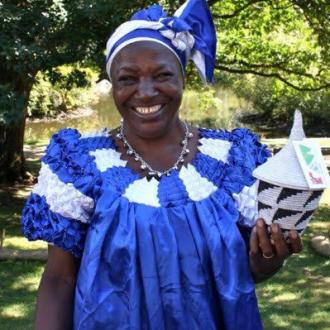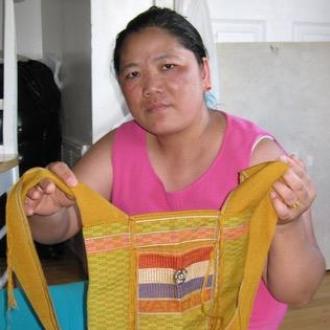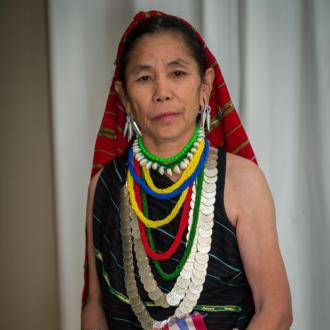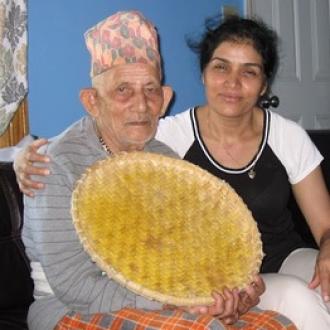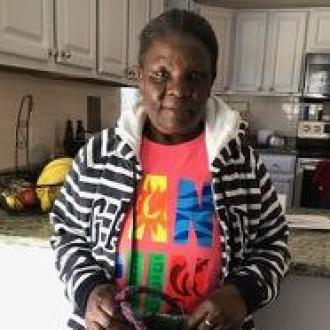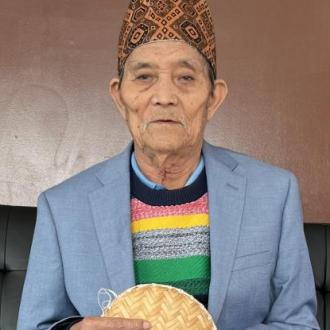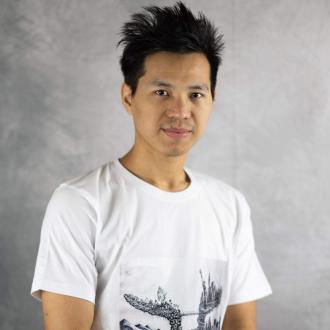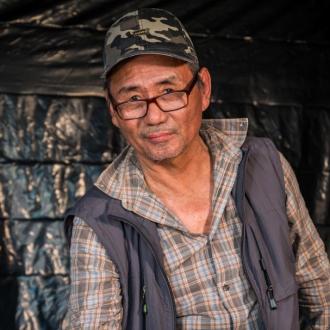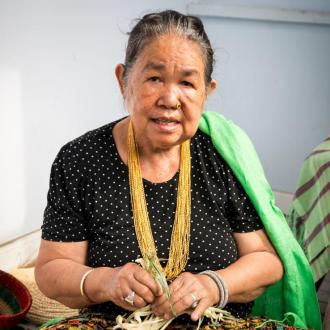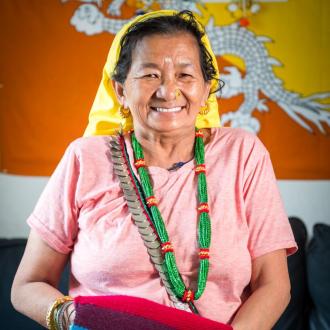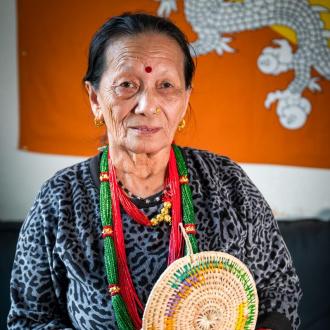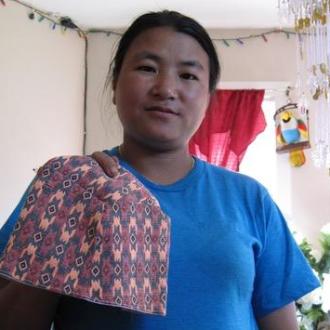Craft makers among the various refugee communities in Worcester, MA tend to work in their homes and employ a range of materials, from threads, stone, corn husks, rattan, bamboo, sisal, willow reeds, and even strips of plastic derived from commercially produced rice sacks from markets. Since arriving in central Massachusetts starting about 15 years ago they have created many types of crafts, including weavings, knitwear, tote bags, house decorations, baskets, trays, bird cages, fish traps, walking sticks, t-shirts with woven inserts, blue jean jackets with added embroidery, greeting cards with embroidery inserts – the list continues, even to a bamboo bicycle! These artisans enjoy innovation and by no means hew rigidly to “traditional crafts.”
Some learned to make their art while living in their countries of origin before being forced to flee to refugee camps due to threats of immediate violence. Others learned their art techniques in craft workshops in the refugee camps, where the staff would sell their goods to larger markets as a new sources of refugee family income. The artisans also often learn from each other: RAW sponsors periodic business meetings for the artisan communities from different parts of the world now resettling in Worcester and despite language barriers, the artisans share craft making techniques. The Path to Empowerment booklet (Rodgers and Umunna 2017, Holy Cross, Center for Liberal Arts in the World) is a prime source for our portraits,m as are later interviews, 2017 to present.


